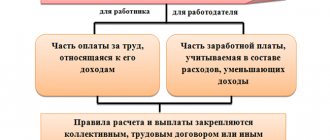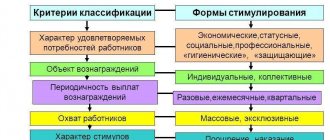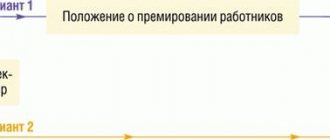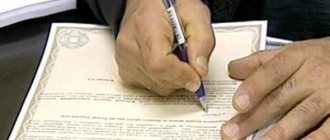A bonus is part of the salary that must be earned. In order for an employee to have an interest in improving his professional level and ensuring good performance of production indicators, it is necessary to link bonus criteria to each other.
For this purpose, the Regulations on bonuses are being developed. This way, the employer can motivate its employees to constantly improve their productivity. Indeed, in this case, the level of income will directly depend on the results of labor.
What are bonus indicators
Bonus indicators are a set of data and information used to evaluate the performance of an employee (group of employees). They are approved by the employer’s local document and are an integral part of the payment system. They must be agreed upon with the trade union organization.
Bonus indicators are developed separately for each division (specific group of employees). Should display data over which specific employees have direct influence. In other words, workers must be able to independently, through their work, change the result obtained.
The basic requirements for bonus indicators are:
- Clarity, understandability . Employees and managers must understand the established criterion for bonuses in the same way. Ambiguity is not allowed here.
- Objectivity . An employee must have the opportunity through his work to influence the final result established by the indicator.
- Possibility of accounting . Correct assessment requires accurate and accessible accounting data for the work performed for a specific indicator.
Remember, in order to motivate employees to work efficiently and achieve the desired result, it is necessary to correctly build a system of bonus indicators. Keep in mind that the size of the bonus becomes interesting if it is more than 10 - 15% of the salary level.
System of conditions
The main condition for bonuses for employees is the achievement of established indicators for a certain period, the full implementation of the specified amount of work and assigned tasks. Employees must clearly understand the system of bonus conditions in order to show interest in increasing their labor efficiency in order to receive monetary rewards. Therefore, indicators and bonus conditions should be developed taking into account the correspondence between the main tasks, deadlines and volumes of work. The system of remuneration conditions should include and take into account the following points:
- discipline at work;
- assessment of production results;
- general results of completed tasks;
- compliance with occupational safety and health regulations;
- length of service;
- payment time - month, quarter or year;
- frequency - one-time or constant;
- the amount of the bonus is fixed or a percentage of the data received based on the results;
- taxation system - taxable or non-taxable;
- cash payment funds - accumulation or consumption.
Employees who violate the terms of bonuses, in cases of regular lateness for work, failure to fulfill the plan or violation of other indicators, are either completely deprived of bonuses or receive a reduced amount.
Read more: How to develop bonus regulations
Indicator criteria
In practice, assessing the work of a specific employee or the team as a whole sometimes turns out to be very problematic. Moreover, often simultaneously several neighboring units directly influence the final result established by the indicator. Therefore, when setting individual indicators, the following basic criteria should be taken into account:
Indicators can be:
- Individual. The work of each individual employee in particular is assessed. Usually applied to managers.
- Collective. Here it is necessary to evaluate the final result of the labor activity of an individual team (team, site, workshop, division).
In this case, the evaluation criteria should cover the following points:
- the employee’s influence on the established indicator (direct, indirect, partial). From this follows the amount of the accrued bonus for implementation;
- positive dynamics of changes in the productivity of the contour section;
- adequacy of remuneration, the ability of the team to influence negligent employees whose actions reduce overall work results;
- specification of directions in order to individualize the approach to assessing labor results;
- optimal choice of quantity and quality of indicators. For an individual unit (employee) it is considered normal if 3 to 5 indicators are established. Below is not effective. If there are more of them on the list, this does not make it possible to concentrate on completing the key task.
Remember, the right approach to determining key bonus criteria will increase the level of motivation of employees to perform the actions necessary for the company. In the end, both sides win.
Document preparation
This is an official document, so it must have all the necessary attributes of official correspondence:
- requisites;
- contents of the document;
- signature of the author of the submission.
Let us tell you in more detail about the rules for drawing up the document.
It must indicate the data of the management of the organization (in whose name the document is written). Next, you need to enter information about the author of the letter (who writes it). It is necessary to indicate in the title what kind of letter it is.
The date must be indicated in the submission. Then, in the text itself, the manager indicates specifically who needs to be encouraged (maybe one person or a list of names of all employees of the department or management).
Important! The text must indicate for what, for what achievements and why this particular employee should be rewarded.
You can view the list of reasons for payment here, and from this article you will learn how to draw up an order with the correct wording of bonuses for full-time trade union workers.
Salary and bonus
Typically, bonus regulations provide for the establishment of a bonus relative to the official salary (tariff rate). Initially, the total allowable amount of the premium is determined, and then it is simply broken down according to indicators. It is important to consider this point:
- Bonus up to 10%. Usually not motivating. If you plan to pay employees such remuneration, then it is better to add it to the official salary. And make the salaries themselves different for employees with different workloads.
- Premium from 10 to 50%. Today it is the most common. This size of bonus has a very significant impact on employees’ desire to receive it. Especially with high salaries. Here, if you set the indicators correctly, you will get the maximum return from the employee while performing work functions.
- Premium over 50%. In fact, it replaces the concept of official salary. This method of bonuses is established by companies where income directly depends on the quantity of products sold. In practice, the salary is set close to the minimum acceptable value. Salary is replaced by bonuses and therefore provides little motivation.
Regulations on bonuses and material incentives
1. General Provisions.
1.1. This Regulation on bonuses/de-bonuses for CJSC employees establishes the procedure and conditions for material incentives for employees.
1.2. This Regulation applies to employees holding positions in accordance with the staffing table of the CJSC
1.3. In these Regulations, bonuses mean the payment of monetary amounts to employees in excess of wages, and de-bonuses mean one-time (one-time) deductions from the actual amount of wages.
1.4. Bonuses/de-bonuses are aimed at strengthening the material interest and increasing the responsibility of employees for the timely and high-quality performance of their assigned tasks and their job duties.
1.5. Bonuses/de-bonuses are awarded on the basis of an individual assessment of the work of each employee and his personal contribution to ensuring the fulfillment of assigned tasks, job responsibilities and contractual obligations.
2.
Types of awards
2.1. These Regulations provide for a one-time bonus.
2.2. One-time (one-time) bonus payments to employees can be made in relation to all employees of the CJSC:
2.2.1. based on the results of work for the year;
2.2.2. in connection with state or professional holidays, significant or professional anniversaries;
2.2.3. in cases provided for in clause 2.3. of this Regulation.
2.3. Prizes can be paid:
2.3.1. Employees of the Production Directorate
— for strict adherence to the production program, active participation and great contribution to the implementation of projects, development and implementation of measures aimed at saving money, improving production indicators (increasing the safety of poultry, reducing mortality, improving the quality of products, etc.), for the implementation other particularly important tasks and urgent work, one-time instructions from management.
2.3.2. Employees of the commercial directorate
— for increasing the volume of sales of poultry meat and by-products, fulfilling and exceeding cash flow plans, active participation and major contribution to the implementation of projects, development, implementation and implementation of measures aimed at saving money, for performing other particularly important tasks and urgent work, one-time management instructions.
2.3.3. Accounting employees
— for timely and high-quality preparation of quarterly and annual reports, submission of balance sheets, for the absence of sanctions from state inspection bodies, active participation and great contribution to the implementation of projects, for the development, implementation and implementation of measures aimed at minimizing taxation, for the implementation of other particularly important assignments and urgent work, one-time instructions from management.
2.3.4. Employees of the financial directorate
— for timely and high-quality preparation of analytical balances, budgets, management accounting reports, successful interaction with credit institutions, active participation and great contribution to the implementation of projects, development, implementation and implementation of measures aimed at saving money, for the implementation of other particularly important tasks and urgent work, one-time instructions from management.
2.3.5. Legal department employees
— for the absence of sanctions from state inspection bodies, the absence of statements of claim, the successful conduct of claims and contractual activities, active participation and great contribution to the implementation of projects, the development, implementation and implementation of measures aimed at saving money, for the performance of other particularly important tasks and urgent work, one-time instructions from management.
2.3.6. Secretariat employees
- for active participation and great contribution to the implementation of projects, development, implementation and implementation of measures aimed at saving money, for the implementation of other particularly important tasks and urgent work, one-time instructions from management.
2.3.7. Employees of the internal control service
— for the absence of sanctions from state inspection bodies, active participation and great contribution to the implementation of projects, for the development, implementation and implementation of measures aimed at minimizing taxation, for the performance of other particularly important tasks and urgent work, one-time instructions from management.
2.3.8. HR Assistant
- for active participation and great contribution to the implementation of projects, development, implementation and implementation of measures aimed at saving money, for the implementation of other particularly important tasks and urgent work, one-time instructions from management.
3.
Amount of bonuses/deductions.
3.1. Bonuses are provided to employees subject to the availability of free funds that can be spent on material incentives without compromising core activities.
3.2. The amount of bonuses (one-time remuneration) is determined for each employee by the General Director on the recommendation of department heads and is not limited.
3.3. The amount of deductions from wages is determined for each employee by the General Director on the recommendation of department heads and is not limited.
4.
The procedure for approving bonuses/de-bonuses.
4.1. Bonuses are awarded to employees based on the order of the General Director.
4.2. The bonus provided for in paragraphs. 2.2.1. and 2.2.2. paid to employees depending on their labor contribution.
4.3. For employees who have worked for less than a full calendar year, a bonus based on the results of their work for the year can be paid at the discretion of the General Director.
4.4. Bonus provided for in clause 2.3. of these Regulations is carried out upon completion of the work, assignment, project as a whole or its stage.
4.5. The basis for issuing an order to award bonuses to employees in the cases provided for in clause 2.3 of these Regulations is a motivated memo from the head of the department.
4.6. Deductions (deductions from actual wages) are made in the following cases:
4.6.1. failure or improper performance by employees of official duties;
4.6.2. non-compliance and non-fulfillment of production business plans and projects;
4.6.3. deterioration of financial and production performance;
4.6.4. failure to comply with production and technological instructions, regulations, labor protection and safety requirements;
4.6.5. violation of established requirements for documentation and work results;
4.6.6. violation of deadlines for completion or delivery of work established by orders and instructions of the administration or contractual obligations;
4.6.7. the presence of claims, suits, reclamations, complaints from external contractors;
4.6.8. the presence of claims and fines from government regulatory authorities;
4.6.9. failure to ensure the safety of property and inventory;
4.6.10. presence of errors and distortions in reporting documents;
4.6.11. violation of labor discipline, internal labor regulations and other local regulations;
4.6.12. committing other violations established by labor legislation as grounds for imposing disciplinary sanctions.
4.7. Deduction of bonuses is carried out on the basis of the order of the General Director.
4.8. The basis for deprivation of bonuses is the decision of the general director and a motivated memo from the head of the division.
5.
Final provisions
5.1. Control over the implementation of these Regulations rests with the General Director.
5.2. The text of these Regulations is to be brought to the attention of the employees of the CJSC.
Who decides who gets the bonus?
The decision to pay bonuses is made by the manager. But before this, it is necessary to check the fulfillment of the established indicators, calculate and agree on the amount of the bonus due to a specific employee (department). For this purpose, companies create special commissions with qualified workers.
Awards are considered as follows:
- At the end of the reporting period, heads of departments submit certificates (reports, reports, reports) to the commission on the fulfillment of basic bonus indicators. They can be individual for each employee, or in general for the department. A list of employees to reduce the bonus level is also indicated.
- The commission reviews the provided indicators, checks the amount of the bonus and submits its proposals for consideration by the manager. Meetings of the commission are documented in minutes.
- The manager, having received bonus proposals from the commission, coordinates them and sends them to personnel to prepare the appropriate order (instruction) for the payment of money to employees.
Remember, in order to avoid misunderstandings, it is advisable to entrust a special commission with the participation of the trade union to consider the issues of meeting indicators, as well as setting the specific amount of the bonus. This will remove a lot of questions.
Who issues it and how
Not only the employee’s manager or the personnel department can handle the preparation of bonuses Such powers have any member of the collective who is given to him by the collective agreement.
The document is then sent to the head of the company. If he agrees, he puts a resolution on it - signs the document. Further, on the basis of this, the enterprise issues a corresponding order. If the manager does not agree with the request, he denies the possibility of a bonus.
Standard forms of orders to reward an employee or several colleagues at once on our website can be downloaded here.
To figure out how to write a presentation for an award, this sample will help you:
Bonus indicators for managers
Bonuses for a manager are always a separate episode of cooperation between the owner and the company. Typically, the premium payment indicators here are laid down in the contract concluded with the first person.
They include the following points:
- completely cover the company's activities. Often expressed in monetary terms (the availability of profit);
- depend on the actions and final results of all employees;
- take into account safety and the level of labor protection at work;
- the level of savings achieved, production optimization without compromising the development of the company as a whole.
Remember, failure to meet certain bonus indicators for a manager should not be reflected at the level of bonuses for employees who ensured the fulfillment of the indicators set by him. This way you only demotivate the team.
Sample submission for bonus for employees
Let's consider one of the options for creating a presentation.
To the General Director of Transmash LLC, A. M. Grigorov, Head of the Supply Department, M. A. Feklishchev.
Submission for awards
I propose to award bonuses based on the results of the 3rd quarter of 2020 to the following employees of the supply department:
- Deputy Head of Department Fedotov A.A.
- Sales representative Uskov N.A.
- Driver E.N. Varennikov
The above-mentioned employees, in addition to exemplary performance of duties, fulfilled the plan to save money and thereby allowed them to be used for repairs of the boiler room.
Bonus amount: 2 salaries.
Thus, a submission for an award is drawn up either in any form, or a sample document is developed at the enterprise, which is subsequently used by authorized persons. The submission must indicate the list of employees who, in the opinion of the head of the department, are entitled to payment, and also reflect its size and reasons for the bonus.
Recommendations for proper organization of the system
The bonus system will be “working” if employees clearly understand that they influence the final result. Based on this, it is worth considering the following points:
- understandable and accessible (for implementation) indicators;
- high level of bonus for achieving each indicator (5% and above);
- a small number of bonus indicators (no more than 5);
- the presence of additional conditions that provide support for discipline and allow department heads to reduce the level of bonuses for individual employees (lateness, absenteeism, failure to meet the average production plan).
Remember, if you initially make it clear in the document why employees will receive a bonus, or why they will have it reduced, this will ensure a high level of self-control in the department.
Why do you need an employee incentive plan?
Permanent bonuses, which are paid every month or every quarter and are specified in the employment contract, do not require any additional paperwork.
Employees receive them regularly, on an ongoing basis (unless, of course, anyone was punished with a deprivation of bonuses). Bonuses that require a manager's introduction include unexpected rewards for special achievements . This issue falls within the competence of the manager. To do this, he must submit a petition for bonuses to his employees and write a special memo - a proposal to reward the employee.
Before writing a proposal for an award, you need to decide on the following questions:
- What are you paying the premium for?
- Who do you want to reward (a complete list of workers is required)?
- For what period of time are you rewarding?
- The amount of the monetary reward itself.
You have all this data, as well as the desire to encourage someone - feel free to start writing a presentation.
Are bonuses recorded in the work book?
In the vast majority of cases, incentives are not included in the document of the working person. The employer, as a rule, does not have such an obligation. According to Government Decree No. 225 of April 16, 2003, regular bonuses provided for by the enterprise’s wage system are not subject to inclusion in the work book.
However, the same Resolution contains paragraph 24, which states that incentives provided for by law or local regulations of the company for certain merits are required to be noted in the main document of an employed person.
We can conclude that the employer enters data if the incentive is not provided for in the organization’s remuneration system. They also mark the employee in connection with the remuneration paid for labor merits. This provision does not apply to the criteria for bonuses for kindergarten employees, since staff receive maximum incentives for length of service. In practice, some incentive is paid on birthdays and holidays.










